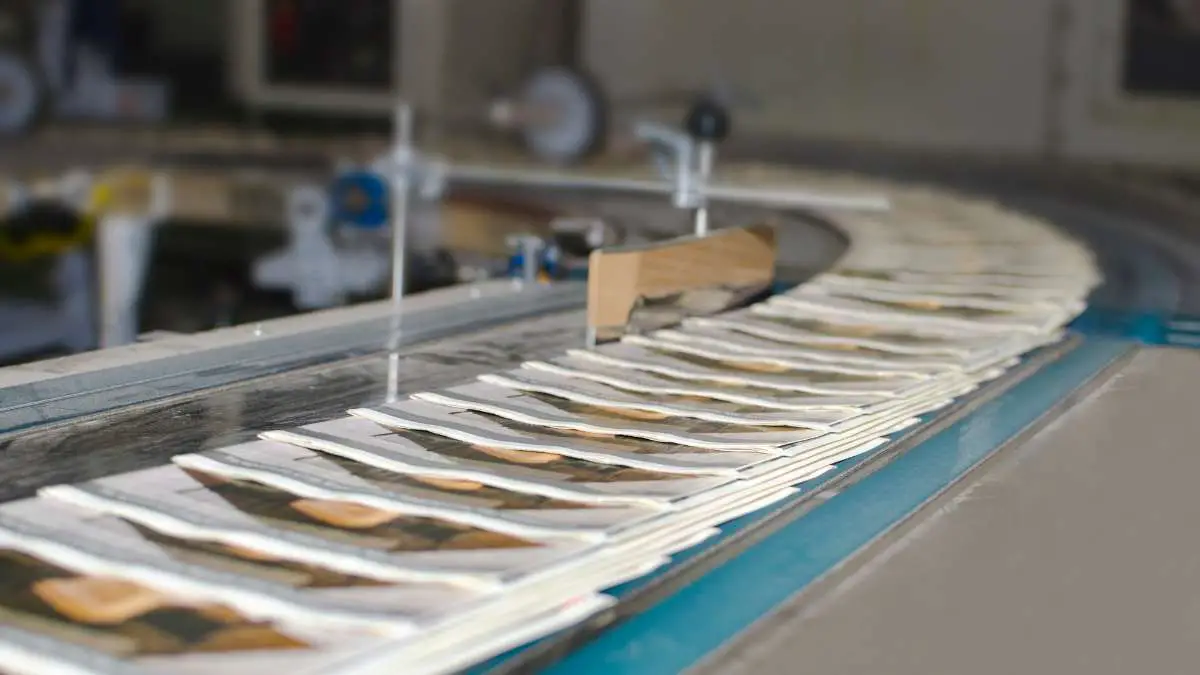Table of Contents
- Introduction
- The Evolution of Print-on-Demand
- Automation and AI Integration
- Sustainability and Environmental Impact
- Customization and Personalization
- Decentralized Manufacturing and Global Distribution
- The Role of Mobile and On-Demand Commerce
- Challenges and Growing Pains
- Opportunities in Education, Publishing, and Enterprise
- Looking Ahead: The Next Decade of POD
- Conclusion
Introduction
Print-on-demand (POD) technology has revolutionized how books, merchandise, and marketing materials are produced and distributed. The concept, once seen as a novelty or a backup to traditional printing, is now a strategic asset used by self-publishers, independent brands, and even large corporations. At its core, POD eliminates the need for bulk inventory by printing items only when an order is placed. This “print it when it’s sold” model reduces waste, lowers upfront costs, and enhances flexibility—a sharp contrast to the conventional print-and-store approach.
Over the last two decades, POD has matured into a robust sector within the global print industry. Yet, its future is even more promising. Advancements in automation, AI, materials science, logistics, and consumer personalization are converging to reshape POD from a lean production model into a powerhouse of real-time customization and decentralized manufacturing. As we examine where this technology is heading, it’s clear that POD is not merely about efficient printing—it’s about transforming how we create, consume, and connect with physical goods in a digital-first world.
The Evolution of Print-on-Demand
In the early days, POD services were often associated with vanity publishing and low-quality output. Authors turned to POD only after exhausting traditional publishing routes, and the resulting books often bore the mark of rushed design and flimsy materials. However, the landscape changed dramatically with improvements in digital printing and the rise of online retail giants like Amazon. Kindle Direct Publishing (KDP) and IngramSpark normalized POD for books, making it a viable option even for professional authors and academic publishers.
Beyond books, POD soon extended into apparel, posters, packaging, and customized merchandise. Platforms like Printful, Teespring, and Redbubble introduced millions to the idea that they could launch entire brands without ever touching inventory. This was a game-changer for designers, entrepreneurs, and creators, allowing them to test ideas quickly and scale with demand.
As printing quality improved and delivery times shortened, consumer expectations shifted. POD was no longer a compromise; it was a legitimate model for businesses that valued agility over mass production. The industry’s evolution has set the stage for the next wave of innovation, driven by convenience, deep technological integration, and customer-centric experiences.
Automation and AI Integration
Automation is becoming the heartbeat of modern POD operations. From order processing to prepress optimization and even predictive maintenance on printers, machine learning and AI tools are woven into every production line stage. These integrations allow quicker turnaround, fewer errors, and lower labor costs.
One area where AI is clearly impacting is content and design generation. With AI-powered tools, creators can generate book covers, T-shirt graphics, or entire layouts in minutes. Combined with natural language processing tools, content can be localized or personalized at scale, opening doors for hyper-targeted products that resonate with specific communities or niches.
Inventory forecasting and demand prediction also benefit from AI integration. By analyzing real-time sales data, seasonality trends, and even social media signals, POD platforms can adjust production capabilities and logistics workflows with remarkable precision. This minimizes waste while maximizing responsiveness—a vital balance in today’s fast-paced, consumer-driven economy.
Sustainability and Environmental Impact
Sustainability is no longer a “nice-to-have” in the POD space—it’s becoming a defining feature. One of POD’s key advantages over traditional printing is its potential for reduced waste. By printing only what is needed, the model naturally avoids overproduction, one of the biggest environmental problems in conventional manufacturing.
That said, the industry still faces sustainability challenges. The environmental footprint of ink, energy usage, packaging materials, and shipping logistics can’t be ignored. Leading POD companies are now investing in eco-friendly inks, recyclable substrates, and more energy-efficient machinery. There’s a growing shift toward waterless printing and digital fabric printing methods that reduce chemical runoff.
Supply chain transparency and carbon-neutral initiatives are also gaining ground. Some POD providers offer carbon offset programs or partner with logistics companies that prioritize green delivery methods. These changes are not just ethically important—they’re commercially necessary, as more customers actively seek environmentally responsible brands.
Customization and Personalization
One of the most exciting areas of growth in POD is the ability to offer unprecedented levels of personalization. Consumers are no longer content with generic products; they want items that reflect their identity, taste, and context. POD technology enables exactly that, thanks to variable data printing and dynamic template systems.
For instance, authors can now publish special editions of books with personalized dedications, covers, or interior designs. E-commerce sellers can offer T-shirts with customizable text, colors, or graphics—all rendered in real-time previews before checkout. This kind of experience adds emotional value to the product and often justifies a higher price point.
What’s more, personalization doesn’t just stop with the consumer. Retailers are using data from previous purchases, browsing behavior, and geographic location to curate print-on-demand products that are more likely to convert. This data-driven approach allows POD to evolve from a static production method into a living, adaptive system for customer engagement.
Decentralized Manufacturing and Global Distribution
A new wave of distributed manufacturing in the POD space is challenging traditional centralized production models. Thanks to partnerships with regional print facilities, companies can now fulfill orders closer to the delivery destination. This not only reduces shipping times and costs but also lessens environmental impact through fewer carbon emissions.
For global sellers, this distributed model is a powerful enabler. A small studio in Kuala Lumpur, for instance, can sell to customers in New York, Berlin, or Sydney without ever shipping internationally. The product is printed locally, delivered quickly, and often at a competitive price. This has profound implications for scaling small businesses into global operations without the burdens of warehousing and international logistics.
The rise of blockchain and smart contracts could further enhance this model by ensuring secure and transparent transactions across multiple nodes in the POD network. As technologies mature, decentralized production could evolve into a form of localized manufacturing that’s fast, smart, and sustainable.
The Role of Mobile and On-Demand Commerce
The ubiquity of mobile devices has reshaped how people shop, create, and interact with products. Mobile-first POD platforms now allow users to design products, place orders, and track deliveries entirely from their smartphones. This is especially attractive to Gen Z and millennial users who expect seamless, intuitive interfaces.
Social commerce is playing a big role in this shift. With integrations into Instagram, TikTok, and Facebook, creators can sell POD merchandise directly through their content streams. This direct-to-fan model shortens the gap between inspiration and purchase, turning viral content into merchandise within hours.

Additionally, QR code-enabled print-on-demand is gaining traction in experiential marketing. Imagine attending an event and scanning a code to order a T-shirt with your name and the event’s artwork—delivered to your home in days. This convergence of mobile, digital engagement, and real-world experiences is expanding the horizons of what POD can achieve.
Challenges and Growing Pains
Despite its rapid growth, POD technology is not without its pain points. Quality consistency remains an issue, particularly when working with multiple production partners across regions. A T-shirt printed in one facility may not match the one from another in terms of color accuracy or fabric feel. Managing this quality control at scale is a significant hurdle.
Shipping times, though faster than before, still struggle to meet the instant gratification expectations fueled by services like Amazon Prime. Customers sometimes perceive POD as “slow,” even if the delivery takes only a few days. Bridging this perception gap requires better communication and possibly tighter integration between POD platforms and logistics providers.
There’s also the issue of intellectual property. As POD platforms grow, so do instances of copyright infringement and design theft. Clearer legal frameworks, stronger content moderation tools, and creator protection systems are needed to maintain a healthy ecosystem.
Lastly, the commoditization of designs, especially in apparel and novelty merchandise, can lead to market saturation. Differentiation through quality, branding, and customer experience will be crucial to standing out in a sea of similar products.
Opportunities in Education, Publishing, and Enterprise
Beyond e-commerce, POD is making inroads into academic publishing, corporate training, and enterprise documentation. Educational institutions are beginning to use POD for course materials, lab manuals, and even student projects. Instead of mass-printing textbooks, schools can produce updated editions tailored to specific curricula, printed only when needed.
In the corporate world, businesses are turning to POD for employee manuals, training guides, branded merchandise, and event materials. These items often need small print runs and quick turnarounds—conditions where POD thrives. Moreover, integrating these systems into enterprise resource planning (ERP) tools can streamline the procurement and distribution of materials across departments and regions.
Academic publishers, once cautious about POD, are warming up to the idea as a way to manage long-tail titles and reduce warehousing costs. With the right metadata and distribution partnerships, scholarly books can be printed and shipped worldwide with minimal overhead. This opens new revenue channels for backlist titles that might otherwise fade into obscurity.
Looking Ahead: The Next Decade of POD
The future of print-on-demand is not just an evolution—it’s a reinvention. Over the next decade, we can expect major strides in 3D print-on-demand, localized micro-factories, and AI-driven design tools that enable even non-creatives to launch sophisticated product lines. The boundary between digital and physical products will continue to blur, creating hybrid experiences that blend print, augmented reality, and real-time data.
We will also likely see tighter integration with voice interfaces and IoT devices. Imagine asking your smart assistant to “print a notebook with this week’s meeting notes” or “send a customized care package to a friend abroad”—all handled via POD technology behind the scenes.
The intersection of POD with Web3, blockchain, and NFTs may open up new business models for digital-physical product ownership. For instance, owning an NFT could entitle someone to a physical print of a limited-edition artwork or collector’s book, printed only upon request, never stored.
In short, POD is on the cusp of becoming a foundational layer of the digital economy—a tool for creators, educators, marketers, and enterprises alike to bridge online inspiration with offline impact.
Conclusion
Print-on-demand technology has evolved far beyond its humble beginnings. Today, it’s an agile, tech-driven, and increasingly sustainable method of producing and distributing customized goods. As it continues to mature, POD is poised to redefine manufacturing, retail, education, and publishing—all while putting more power into the hands of creators and consumers.
The future of POD technology lies in integration: integration with AI for smarter design and production, with mobile and social platforms for real-time engagement, with local fulfillment networks for faster, greener delivery, and with data systems for hyper-personalized experiences. It’s a future that rewards creativity, efficiency, and responsiveness—traits that will define success in the years to come.
As print-on-demand becomes more intelligent and embedded in our digital lives, it will no longer be seen as a niche alternative, but rather as a standard part of how we make and move things in the 21st century.

1 thought on “The Future of Print-on-Demand Technology”